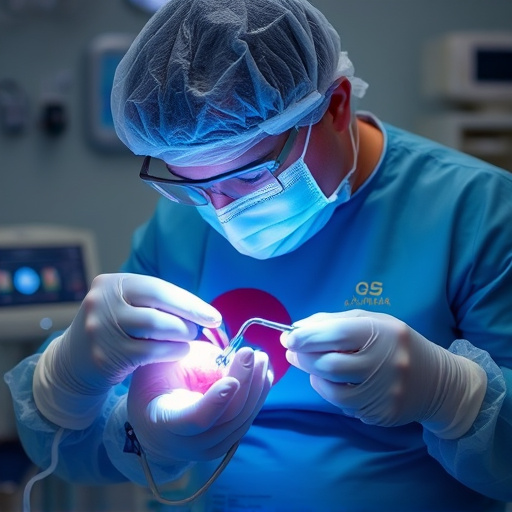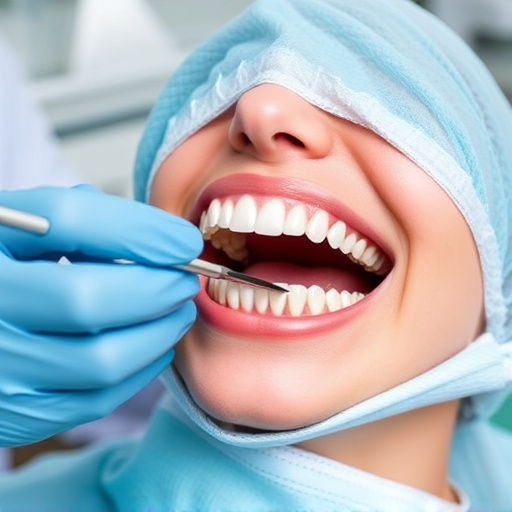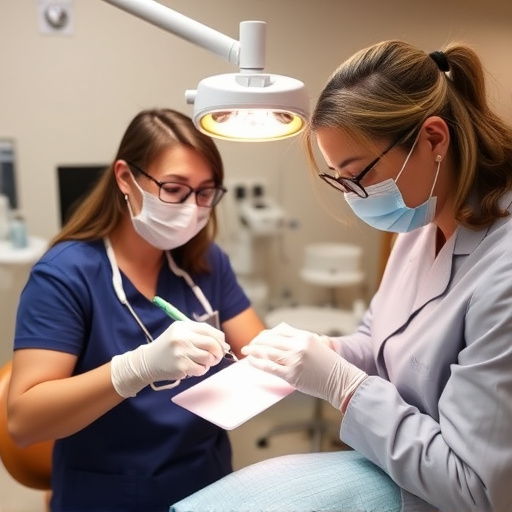Bone grafting treatment involves a multi-stage healing process: inflammation, tissue regeneration, and bone formation, culminating in new bone growth. Initial discomfort, swelling, and tenderness are expected, with care instructions focusing on site cleanliness. Swelling peaks around 2-3 days post-surgery, and recovery timelines vary; significant improvements often seen within a year, requiring regular dental check-ups for optimal results.
“After undergoing bone grafting treatment, understanding the healing timeline is crucial for a successful recovery. This comprehensive guide delves into the intricate process of bone regeneration, offering insights into what to expect in the initial weeks post-surgery. From managing pain and swelling to recognizing signs of complications, patients can navigate their journey with informed awareness. Additionally, we explore long-term recovery, highlighting potential outcomes and common concerns related to this advanced dental procedure.”
- Understanding the Bone Grafting Healing Process
- What to Expect in the Initial Weeks After Surgery
- Long-Term Recovery and Potential Complications
Understanding the Bone Grafting Healing Process
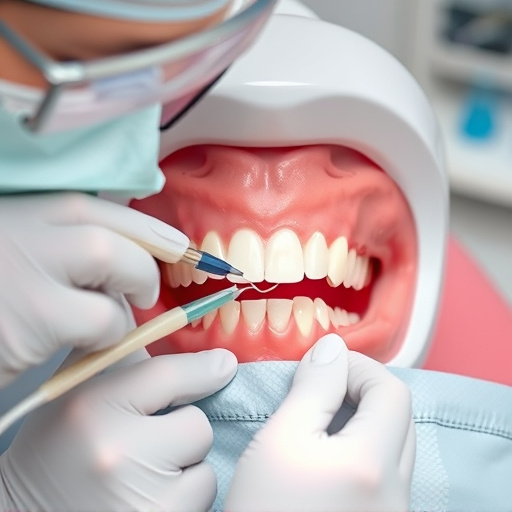
The bone grafting healing process is a fascinating journey that involves several stages crucial for successful integration and new bone growth. After the bone grafting treatment, your body initiates a complex cascade of events to repair and regenerate the damaged or missing bone structure. This intricate process begins with inflammation, where the surgical site experiences redness, swelling, and mild pain – natural responses from your immune system to protect and heal the wound. As the initial inflammatory phase subsides, the focus shifts to tissue regeneration and bone formation.
Over time, the grafted bone material, often derived from donor sources or synthetic alternatives, serves as a scaffold for new bone cells to attach and grow. This stage is characterized by the gradual replacement of the graft with newly formed bone tissue, ensuring a strong and stable foundation. Whether it’s following wisdom tooth removal or dental bonding procedures involving bone grafting, understanding this healing timeline empowers patients in their recovery journey. Additionally, children’s dentistry often incorporates bone grafting techniques to address early oral health issues, setting the stage for future dental stability.
What to Expect in the Initial Weeks After Surgery
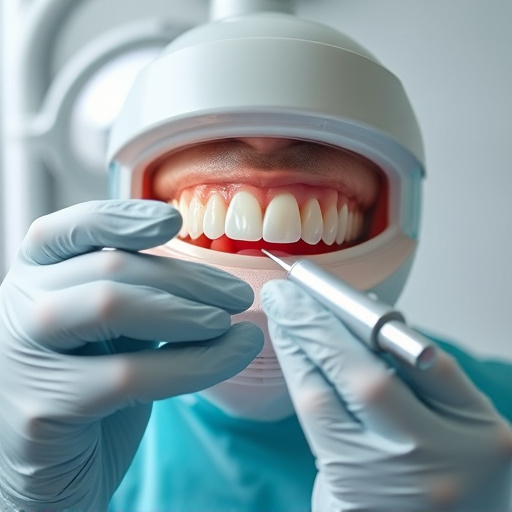
In the initial weeks following bone grafting treatment, it’s normal to experience some discomfort and swelling. This is a natural part of the healing process as your body works to integrate the new bone material. You may notice tenderness or pain around the surgical site, which can be managed with over-the-counter pain relievers recommended by your dentist or oral surgeon. It’s important to keep the area clean and follow any specific care instructions provided by your dental care team, including gentle teeth cleaning and avoiding strenuous activities that could disrupt the healing timeline.
During this time, you should also expect some swelling and bruising, which typically peaks around 2-3 days post-surgery and gradually subsides in the following weeks. Your gums may feel sensitive, and you might notice a slight change in bite or fit of your teeth, especially if dental bonding was part of the procedure. Resting and avoiding strenuous chewing or biting on the treated area will help ensure optimal healing for your bone grafting treatment.
Long-Term Recovery and Potential Complications
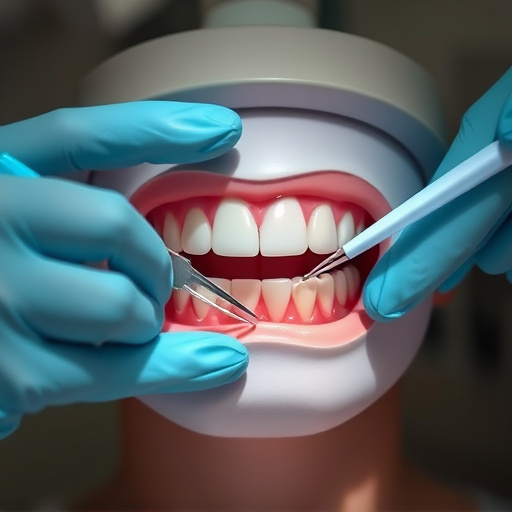
The recovery process after bone grafting treatment is a journey with varying timelines and outcomes. While many patients experience significant improvements in bone density and oral health within a year, it’s crucial to remember that long-term recovery is a gradual evolution. As the new bone integrates with surrounding tissue, the healing process solidifies, leading to stronger jawbone support for dental implants or enhanced aesthetic results when combined with procedures like clear aligners or cosmetic fillings.
However, as with any medical intervention, there are potential complications to be aware of. Post-operative issues may include infection, bleeding, or sensitivity. Regular dental cleanings and check-ups are vital to monitor these risks and ensure the best possible outcome. Timely intervention by a dental professional can address any concerns, ensuring patients on their path to complete healing and restored oral health.
Bone grafting treatment is a significant step towards repairing and regenerating bone tissue, offering hope for improved oral health and functionality. Understanding the healing timeline is crucial for patients undergoing this procedure. From the initial weeks post-surgery to long-term recovery, each phase plays a vital role in achieving optimal results. By staying informed about what to expect, patients can navigate their journey with confidence, knowing that proper care and monitoring can lead to successful bone grafting treatment outcomes.










